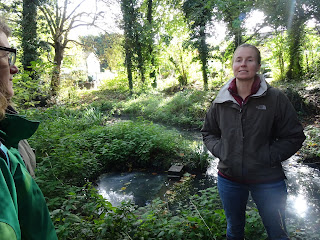Wassailing or Wasseling

New orchard Alexandra recreation ground Berrylands Peri-urban habitats in the south of the borough are radically altered; but orchards can maintain a wonderful wildlife habitat. The longer grass between trees can be a haven for wildflowers and insects; surplus fruit is appreciated by winter Scandanavian thrushes (redwings and fieldfares). There are some excellent blogs on orchards and their wildlife. http://brightwellorchards.blogspot.co.uk/ See also http://www.abundancelondon.com/ with excellent posts from K. Leibreich on the situation in south-west London fruit growing stronghold in Chiswick and Isleworth. https://www.theguardian.com/global/blog/2016/jan/11/community-belonging-values-discovery is an account of wassailing in an Oxfordshire village. The tradition of wassailing (also wasselling) into two distinct categories: The house-visiting wassail and the orchard-visiting wassail. The house-visiting wassail is the practice of people going doo...








